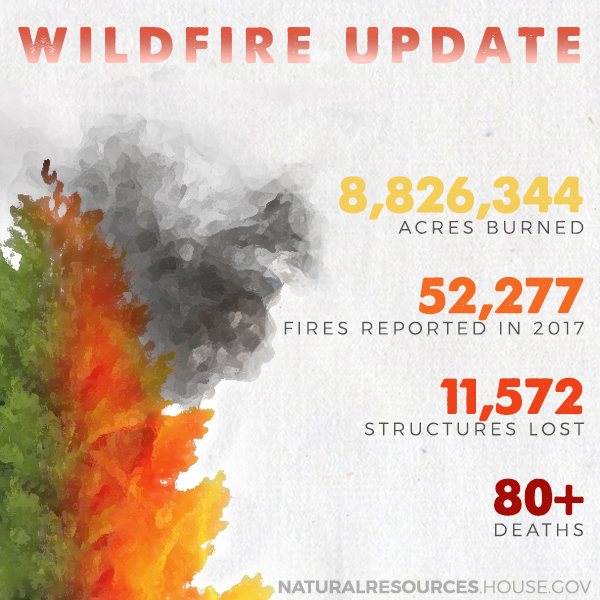Wildfires
Issue OverviewIf managed wisely, America’s national forests can provide clean water, wildlife habitat, recreational opportunities, and abundant domestic supplies of wood products and support rural communities and thousands of jobs in the timber industry. Unfortunately, this year’s wildfire season like recent past wildfire seasons, produced several catastrophic fires that have destroyed more than 9 million acres, resulting in the tragic loss of life and property. In many cases, however, it’s possible to reduce the risk of catastrophic wildfire through proactive, healthy forest management. While factors such as prolonged drought continue to raise the risk of wildfire, it is imperative that the federal government actively address the one issue within its control: hazardous fuels. Unnatural, overgrown, and unhealthy forests increase the risk and intensity of wildfires. Active management; e.g., thinning the forests, helps protect and restore forests while also helping local economies, and creating jobs. The inability of the Forest Service to thin forests due to overly cumbersome and lengthy environmental processes, increasing frivolous lawsuits filed by certain litigious environmental groups, and a lack of sufficient agency focus on this challenge has led to nearly 60 million acres that are at high risk of deadly and catastrophic forest fires that endanger communities, hurt local economies, destroy land and water quality and release massive amounts of emissions into the atmosphere.Key LegislationH.R. 2936 – The Resilient Federal Forests Act of 2017
|
Newsletter Sign Up
Sign up to receive news, updates and insights directly to your inbox.


